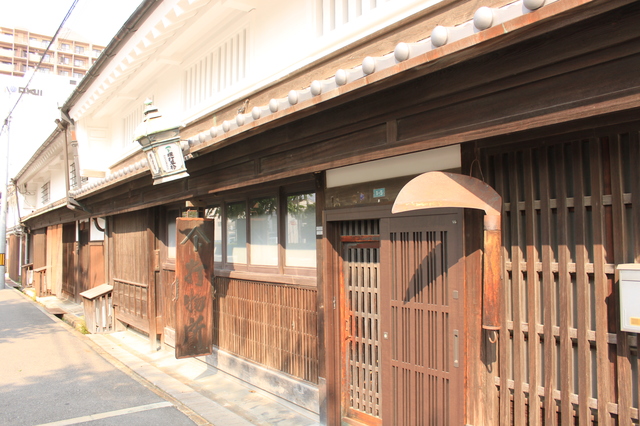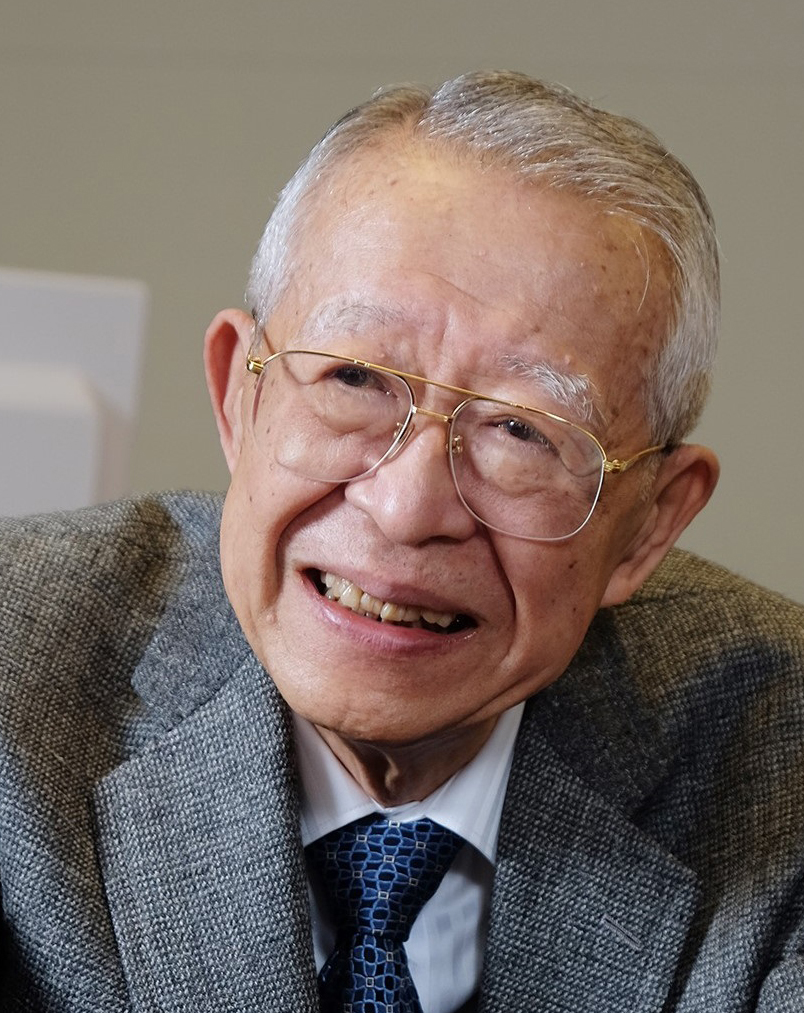Why are foreign chefs captivated by Japanese kitchen knives?

A Yanagiba kitchen knife is used to cut fish into sashimi (slices of raw fish). Japanese-style kitchen knives come in about 200 types by usage. Professional chefs use different types of kitchen knives for different purposes to create the specifically intended taste.

Higuchi Naoya, novelist and chef
The decline in Japanese influence in the international community is often pointed out, but it is not always the case in the cooking industry. Japanese chefs are in tremendous demand all over the world. There are an increasing number of people who come to Japan from abroad to learn how to cook. This situation was inconceivable years ago.
Of course, because prices are different, one cannot make a simple comparison. Amid the pessimism over Japanese products not selling well, including home appliances, according to trade statistics compiled by the Japanese Ministry of Finance, Japanese kitchen knife exports have continued to grow steadily since 2004 (excluding 2008 when the Lehman Shock struck the world).
A while ago, when chefs from a foreign star-restaurant came to Japan, they would often buy many Japanese kitchen knives and take them home. But today everyone buys Japanese kitchen knives as if it were quite natural.
Manufacturers in Sakai, Osaka produce 90% of Japanese-style kitchen knives for professional use.
Kitchen knife manufacture by division of labor among craftsmen

Izumiriki Seisakusho (Izumi Sharp-Edged Tool Manufacturing Company) in Sakai, Osaka Prefecture
Chefs all over the world admire Japanese kitchen knives in recognition of their sharpness. For example, Zwilling J.A. Henckels, based in Solingen, Germany, which is world-famous for its knives, built plants for manufacturing a line-up of top-class products in Seki, Gifu Prefecture, because they needed Japanese craftsmanship to realize the best sharpness.
It may not be well-known to people outside the industry that a German company produced the flagship model of a Western kitchen knife in Japan.
The Japanese kitchen knives that Japanese chefs like to use are produced in Sakai, Osaka. The city’s nationwide share of cutting knife sales is small, with about 7%, but it is said that the city enjoys a share of more than 90% in Japanese kitchen knives for professional use.
I visited Izumiriki Seisakusho (Izumi Sharp-Edged Tool Manufacturing Company) in Sakai to see how kitchen knives are made. This long-established company started its business in 1805 and is well-known for its Sakai-toji brand knives. Kochi, Fukui, Gifu and Niigata are major Japanese kitchen knife producers, but most of these make their products by the division of labor, with some exceptions. Sakai’s kitchen knife production is also characterized by a division of labor in the manufacturing process — blacksmithing (the work of forging iron to create knives), sharpening (honing the work of the blacksmith) and hafting (attaching the knife to a handle).
The wholesaler not only sells kitchen knives to the retailer but also handles the production work, such as hafting and the finishing touches. They sometimes inscribe the names of the kitchen knife manufacturers.
With a mere glance at the kitchen knives from the outside it is difficult to identify who made them and what process they went through to reach us. According to another information source, there are some cases in which Sakai manufacturers simply add hafts to half-finished products manufactured in foreign countries. The names of the kitchen knife manufacturers are inscribed, but this is not enough information to know who made them. What process did they go through to have gained the shape they have now? As far as I understood, I do not think that they are based on particular customs and I do not know the details. Seen from my eyes, the distribution of kitchen knives is mysterious.
Craftsmen’s eyes are as precise as a machine, sensing the temperature of iron according to the colors of the flames.
Shinoda Hisao, senior executive officer of Izumiriki Seisakusho, showed me around the manufacturing site at Izumiriki Seisakusho.
Mr. Ikeda manufactures the main part before adding hafts during the process of blacksmithing. Blacksmithing consists of eleven steps, but materials can be categorized into honyaki (completely made of steel) and awase, (a combination of soft iron and steel). Of course, honyaki knives are more expensive.
I watched the making of awase kitchen knives. The plant was filled with the heat of kiln flames. Every time a craftsman hit a blade with a hammer, it created sparks. Awase is the unique Japanese technique of blending hard metal with soft metal.
The harder the kitchen knife, the better it cuts. But hardness inevitably introduces vulnerability and fragility. Awase is the technique of supplementing this weakness by blending soft metal and making it difficult to bend or break when sharpening the tip of a blade. It is a wonder that this technique is not seen abroad.
“Temperature is key. If it’s too high, the blade goes bad. But if it’s too low, the knife doesn’t harden,” said Ikeda.
I asked him how he identifies the temperature threshold.
“By the color of the flames. Temperature differs with honyaki and awase. I can quickly see whether it is 800 degrees or 1,000 degrees by the color. For awase, the knife doesn’t get sticky at a temperature of 900 degrees. It becomes dull at 1,100 degrees. I blend two metals by hitting the knife at a temperature of 950 degrees to 1,050 degrees,” said Ikeda.
Because you cannot measure the temperature of iron that is put into the kiln, you know that you need to use your eyes. As the proverb goes, “Strike while the iron is hot,” meaning you will miss your opportunity if you make a decision using a thermometer.
“If I have time, I also make Japanese swords. But the trouble is they are made of tamahagane steel, which is quite a different substance. Once I make a Japanese sword, it takes some time for my eyes to get back to normal. I have to make adjustments,” said Mr. Ikeda.
Never before had I considered that a craftsman would have to do something like the calibration (color adjustment) of a PC monitor after making something. This shows how precisely craftsmen’s eyes can see through temperature like a machine. Mr. Ikeda said that he can gauge temperature to within ten degrees.
Scientifically speaking, you can make metal stickier (tougher) by adding heat to it at a temperature slightly lower than that of the greatest hardness. As mentioned above, the harder a kitchen knife, the better it cuts. Stickiness is a trade-off. It is very delicate work to identify the threshold temperature.
“The demand for Japanese-style kitchen knives began to decline. When we were young, we received many orders and hit knives all the time. At that time, honyaki craftsmen used good materials. When I get a little older, I will dedicate myself to making Japanese swords. It’s fun,” said Mr. Ikeda.
Japanese-style kitchen knives have attracted global attention and their exports have been increasing, but the domestic demand is showing a tendency to decrease.
The kitchen knife industry is showing a tendency to decline despite the growing global attention.
Next, sharpeners put on the finishing touches to the half-finished products that Mr. Ikeda created. Mr. Morimoto, to whom I was introduced, is a craftsman who has been selected as a contemporary master. His studio was much smaller than Mr. Ikeda’s. Sharpening tools filled both sides of a passageway through which only one person could pass.
Mr. Morimoto explained one step of the sharpening process in a serious tone, then said, “Now, let’s start.” He told me that the sharpening process consists of more than twenty steps ranging from rough sharpening to the finishing touches. As a kitchen knife goes through one step after another, it becomes shinier and more beautiful. I paid particular attention to his work of correcting distortions as he went from one step to another.
“The half-finished product that a blacksmith worked on is still rough. In the case of awase, because both hard and soft metals pull on each other because of their nature, a kitchen knife becomes distorted more easily. All kitchen knives look the same, but different knives have idiosyncrasies depending on the blacksmith,” said Mr. Morimoto.
For a kitchen knife to cut well, it must be straight. In contrast to the work of blacksmiths, sharpeners repeat delicate adjustments. Temperature is also the focus for this. If heat is transmitted through a kitchen knife due to the friction from sharpening, it will affect the sharpness.
“Because I cannot see the side that is being sharpened, it is important to feel it, to get a sense of it through the tips of my fingers,” said Mr. Morimoto.
Mr. Morimoto is concerned that one major future challenge is how to cope with the shortage of successors. He said, “Fortunately, I have successors, but I am afraid that we will see such people decrease little by little in the years to come. A long time ago we had a customer who wanted a new kitchen knife at the start of work once a year. But on one occasion I was so busy that I delivered an unsatisfactory product to him. He quickly realized that it was of poor quality. ‘This is so bad!’ he said. The experience had me searching my soul. I am concerned that such interactions with users are becoming rare.”
Kitchen knives, after being sharpened, are carried to Izumiriki Seisakusho where any slight distortions are corrected. Senior Executive Officer Shinoda explained in front of a pile of products, “In spite of sharpeners’ corrections, awase kitchen knives in particular are still distorted. We make adjustments to them. We keep them in storage for between one and five years. This process stabilizes the metals.”
A wholesaling manufacturer not only acts as a producer but also pays careful attention to quality control. This seems inefficient, but the division of labor is a system for preventing defective products from being produced by many people’s work. This has helped to guarantee the quality of Sakai’s kitchen knives.
“That’s why we have the largest amount of stock in Japan,” said Senior Executive Officer Shinoda in a serious tone.
“Japanese kitchen knives are highly evaluated in foreign countries. If I didn’t work here, I could earn more money in the kitchen knife business abroad. Some countries sell what are allegedly Japanese kitchen knives, but in some cases Chinese people run the business. We fail to provide proper information about the process from sharpening to maintenance. It is our future challenge,” he said.
Shinoda has just run a promotional campaign about Japanese kitchen knives at Madrid Fusion, one of the world’s largest food events, in Spain. I empathize with him about the hard work of inheriting a company with a long history.
As mentioned above, the demand for Japanese kitchen knives is tapering off. Currently, we are seeing stagnation in the demand for kitchen knives for professional use, despite the increase in the number of people who work in restaurants. Now we hardly see Japanese-style kitchen knives used at home. In the past, home users had at least one broad-bladed carving knife for preparing fish. However, now that we often buy sliced fish in stores, we have no need to keep such kitchen knives at home.
For the demand for kitchen knives for professional use, there is no positive outlook. According to data released by Sakai City, production decreased from 931 million yen in 2006 to 610 million yen in 2008, a 300 million-yen drop in just two years. According to a survey conducted by the Federation of Sakai Cutlery Commerce and Industry Association, the number of employees also decreased from 332 to 290. The major reason for this decrease is that Japanese-style luxury restaurants closed down one after another in the difficult business environment.
According to the Economic Census Basic Survey conducted by the Ministry of Internal Affairs and Communications, there has been an increase in the number of people who work in the food service industry. The reason why kitchen knives for professional use do not sell well despite this is that small restaurants decreased, while large restaurants with a large number of employees increased. Restaurants equipped with central kitchens just need scissors to cut packed bags.
For example, sushi restaurants have continued to decrease more rapidly than any other type of restaurant. In the meantime, large conveyor belt sushi bars have shown a tendency to increase. Because conveyor belt sushi bars provide each store with pre-cut items, they have less of a need for kitchen knives.
Securing successors is also a challenge and it cannot be said that there will be a bright future for Japanese-style kitchen knives. As the title of this serial article shows, the day when kitchen knives become a national heritage may arrive soon. The entire industry will change at some point in the future so that the craftsmen protecting kitchen knife culture will reap greater rewards.
Ordinary homes do not need luxury kitchen knives. It is more important for home users to properly sharpen their kitchen knives. The sharpness and comfort of kitchen knives are defined by subjective feelings, but if you sharpen expensive items well, you will be able to achieve a high level of sharpness. Because luxury kitchen knives can retain their sharpness for a long time, I think it is better to use an exceptional one.
Fundamentally speaking, kitchen knife culture cannot survive on its own. The user has to do the maintenance work of sharpening kitchen knives to be used as tools. I wonder how many home or restaurant cooks use properly sharpened kitchen knives. It is a challenge to provide information to overseas countries, but I cannot help feeling that the foundations are shaky.
The work of craftsmen, blacksmiths and sharpeners (who of course have the brilliant title of traditional craft creators), whose names are usually not inscribed on the surface of kitchen knives, brighten my heart while following the kitchen knife business. I felt like I found hope when communicating with people who are proud of their own work and do not hesitate to demonstrate their skills.
Finally, I would like to express my deepest gratitude to Mr. Shinoda, President of Izumiriki Seisakusho, for his guidance and corrections in the preparation of this manuscript.
Translated from “Naze gaikokujin shefu wa ‘nihon no hocho’ ni horekomunoka (Why are foreign chefs captivated by Japanese kitchen knives?),” DIAMOND Online, June 4, 2014. http://diamond.jp/articles/-/54037 (Courtesy of DIAMOND, Inc.) [June 2014]




